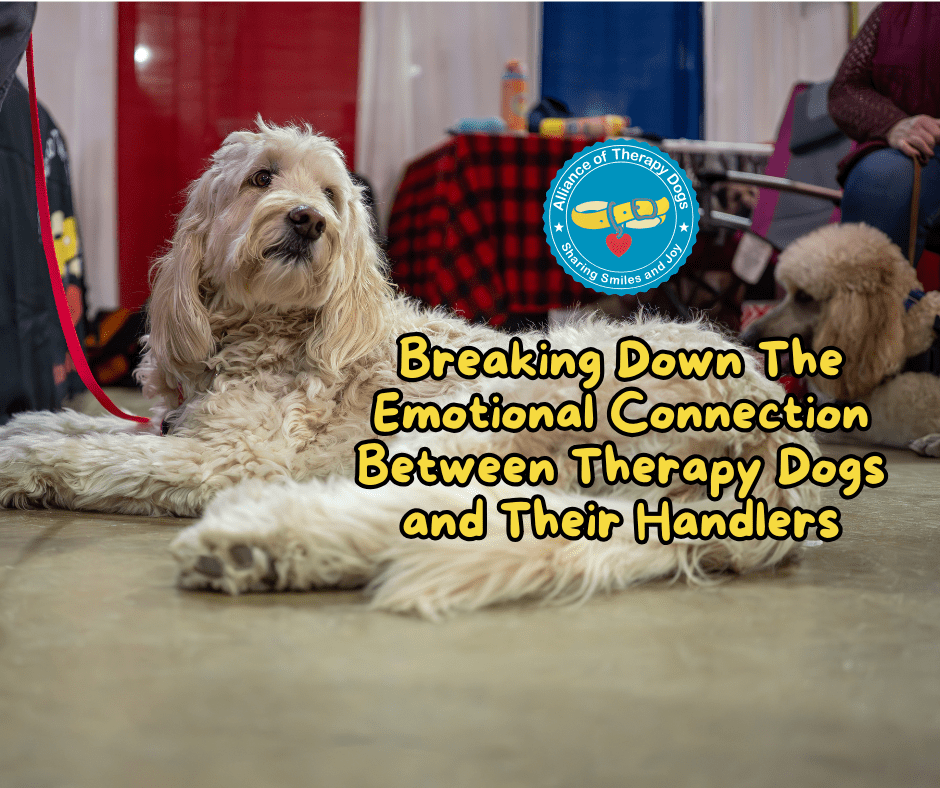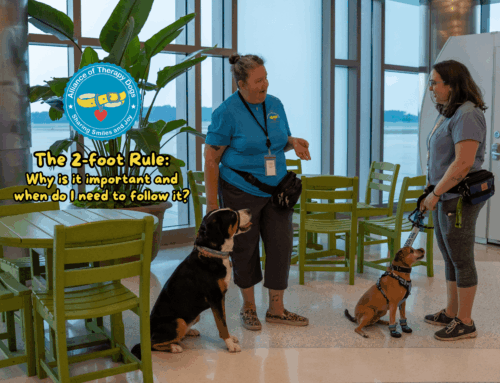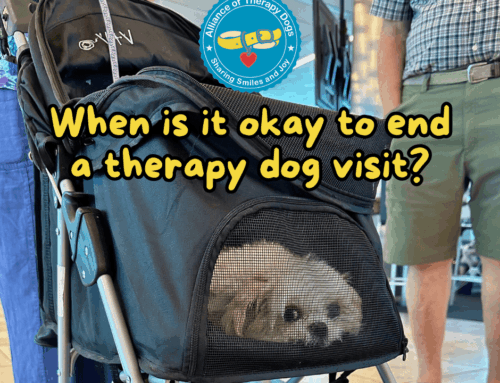Therapy dogs are often superheroes to those they visit. Through tactile interaction, kind eyes, and friendly presence, these amazing dogs bring comfort to people in places like hospitals, nursing homes, schools, and workplaces. While therapy dogs themselves are often the focus of attention, the emotional connection between the dog and its handler (the person who accompanies the dog) is just as important.
The emotional connection between therapy dogs and their handlers is built on trust, respect, and understanding. It’s a partnership that helps both the dog and the handler give support to people. Let’s look at this bond and how it helps them work together to support others.
The Power of the Human-Animal Connection
The emotional connection between therapy dogs and their handlers is based on the human-animal bond. Both the dog and handler share feelings and understand each other. This connection doesn’t need words or obvious physical signs.
Dogs are known for their ability to connect with humans. They can sense how people are feeling. A therapy dog can respond to these emotional changes by offering support when it’s needed. But it’s not just about the dog’s ability to sense when they are needed; handlers also need to be aware of how their dog is feeling, which helps the dog do its job well.
Trust: The Foundation of the Relationship
Trust is one of the most important parts of the relationship between therapy dogs and their handlers. This trust helps the dog follow the handler’s instructions during therapy visits, even when the environment is new or stressful.
Handlers also need to trust their dogs to read and respond to those they visit appropriately. If a handler doesn’t trust their dog’s instincts, the therapy dog visit might not be as effective. Trust doesn’t happen overnight. It builds slowly through training and spending time together. Over time, handlers and dogs get to know each other. The stronger the trust, the better their relationship.
Empathy: The Heart of the Relationship
Empathy refers to the understanding of and sharing of feelings with others, and it is important for therapy dog handlers. With an empathetic handler, both the dog and handler can respond to people in ways that help them feel better.
Dogs can pick up on small changes in a person’s body language, scent, or behavior, which can help them perceive how someone might be feeling. They can then use this perception to comfort people, even if the person can’t express their feelings clearly.
Handlers should be empathetic toward their dogs. They should know when their dog is tired, stressed, or needs a break. Working with people in stressful or emotional situations can affect dogs, too. Handlers must be careful to make sure their dog gets rest and care before, during, and after their work.
The Handler’s Role: Guiding and Supporting the Dog
The handler plays a key role in guiding the dog during therapy dog visits. Handlers need to have a good understanding of their dog’s behavior and be able to support their dog when doing visits. Handlers also need to watch for signs that the dog is tired or overstimulated, especially after long or stressful visits. A good handler knows when to give the dog a break. By taking care of the dog’s needs, handlers help the dog continue to do its important work.
The emotional connection between therapy dogs and their handlers is a powerful force that helps provide support and healing. This relationship, built on trust, empathy, and understanding, allows therapy dogs to share smiles and joy while handlers guide and care for their dogs. Together, they create a safe and healing space for everyone with whom they interact. This shows the incredible power of the connection between humans and animals, and how it can change lives for the better.






